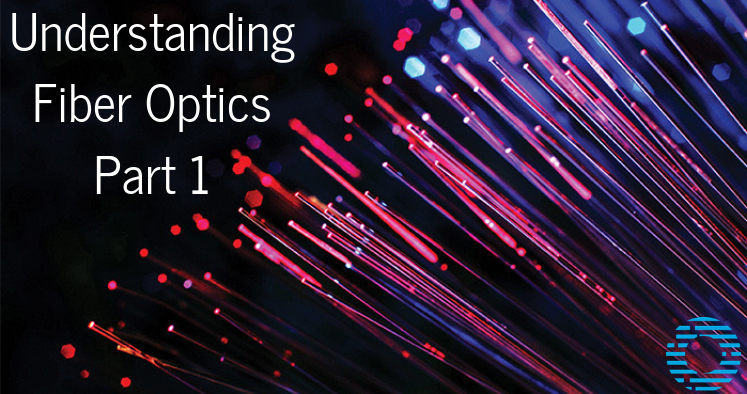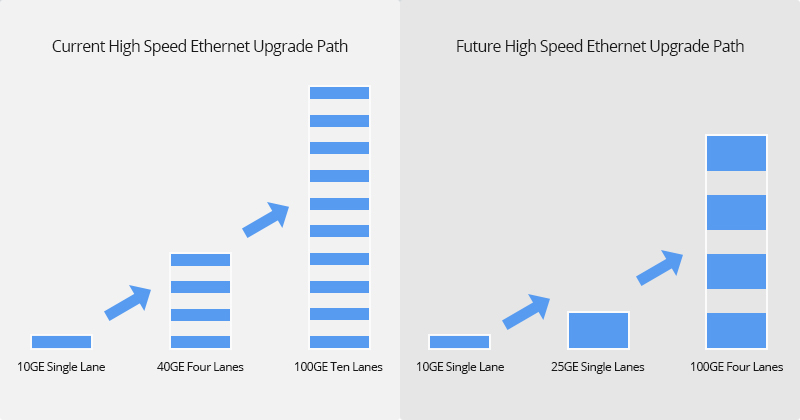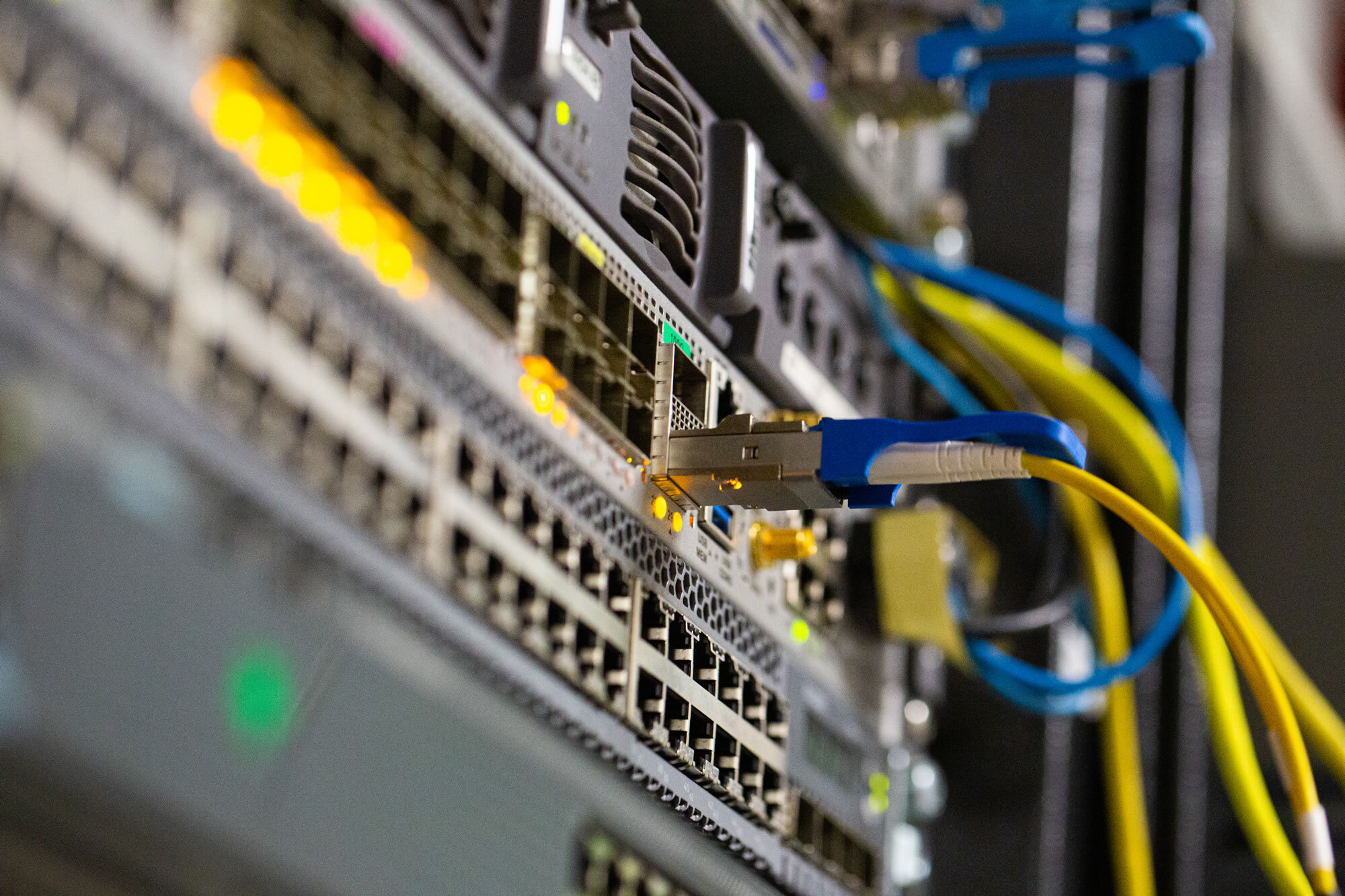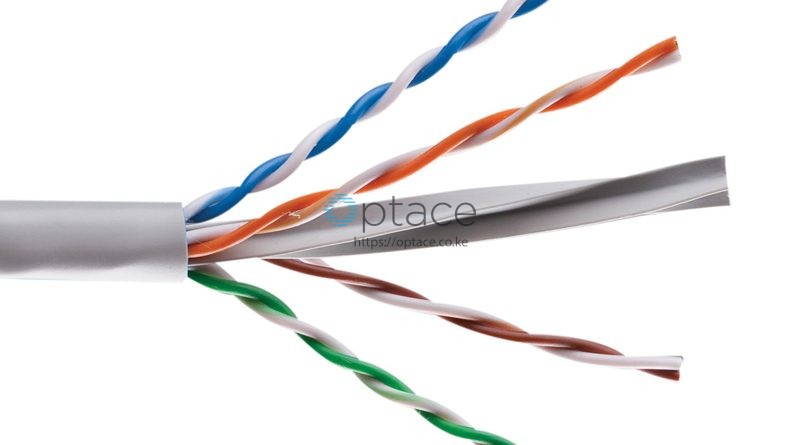
A fiber optic cable is a network cable that contains strands of glass fibers inside an insulated casing, designed for long distance, high-performance data networking and telecommunications. Compared to wired cables, fiber optic cables provide higher bandwidth and can transmit data over longer distances. They basically support much of the world’s internet, cable television, and telephone systems.
Fiber optic cables come in two types; Single Mode and Multimode. Let’s dive into detail on their functional differences and applications.
Single Mode Cable
Single Mode optic cable has a small diametral core that allows only one mode of light to propagate. The small core and single light-wave virtually eliminate any distortion that could result from overlapping light pulses, providing the least signal attenuation. Because of this, the number of light reflections created as the light passes through the core decreases, lowering attenuation (loss), creating the ability for the signal to travel further and enabling the highest transmission speeds of any fiber cable type.
Types of Single Mode Fiber Cables
Single mode cables come in 2 categories, OS1 and OS2.
In a nutshell, OS1 fiber is a tight buffered cable designed for use in indoor applications (such as campuses or data centers) where the maximum distance is 10 km. OS2 fiber is a loose tube cable designed for use in outdoor cases (like street, underground and burial) where the maximum distance is up to 200 km. Both OS1 and OS2 fiber optic cable allow a distance of gigabit to 10G Ethernet. Besides, OS2 fiber can support 40G and 100G Ethernet.
Applications:
Single Mode cables are best suited for long distance, high bandwidth signal transmissions by Telcos, Cable TV companies, Colleges and Universities as well as Data Centers.
Multimode Cable
A multimode optic cable has a large diametral core that allows multiple modes of light to propagate. Because of this, the number of light reflections created as the light passes through the core increases, creating the ability for more data to pass through at a given time. Because of the high dispersion and attenuation rate with this type of fiber, the quality of the signal is reduced over long distances.
Types of Multimode Fiber Cables
Multimode cables are classified into 5 categories, based on functional differences.
OM1 – typically comes with an orange jacket and have a core size of 62.5 µm. It can support 10 Gigabit Ethernet at lengths of up to 33 meters. It is most commonly used for 100 Megabit Ethernet applications. This type commonly uses a LED light source.
OM2 – Like OM1, OM2 fiber also comes with an orange jacket and uses a LED light source but with a smaller core size of 50 µm. It supports up to 10 Gigabit Ethernet at lengths up to 82 meters but is more commonly used for 1 Gigabit Ethernet applications.
OM3 – OM3 fiber comes with an aqua color jacket. Like the OM2, its core size is 50 µm, but the cable is optimized for laser-based equipment. OM3 supports 10 Gigabit Ethernet at lengths up to 300 meters. Besides, OM3 is able to support 40 Gigabit and 100 Gigabit Ethernet up to 100 meters, however, 10 Gigabit Ethernet is most commonly used.
OM4 – OM4 fiber is completely backwards compatible with OM3 fiber and shares the same distinctive aqua jacket. OM4 was developed specifically for VSCEL laser transmission and allows 10 Gbit/s link distances of up to 550m compared to 300M with OM3. And it’s able to run 40/100GB up to 150 meters utilizing a MPO connector.
OM5 – OM5 fiber, also known as WBMMF (wideband multimode fiber), is the newest type of multimode fiber, and it is backwards compatible with OM4. It has the same core size as OM2, OM3, and OM4. The color of OM5 fiber jacket was chosen as lime green. It is designed and specified to support at least four WDM channels at a minimum speed of 28Gbps per channel through the 850-953 nm window.
Applications
Multimode cables are typically used for short distance, data and audio/video applications in LANs.
Single Mode or Multimode?
It is all dependent on the applications. For backbone, high-speed interconnections between systems or even large companies over a long distance, single mode fiber cables work best. These cables can be quite pricey.
Multimode cables on the other hand are more preferred as a cost-effective choice for enterprise and data center interconnections, up to 600 metres. They are often used for backbone applications in buildings.
However, that doesn’t mean one can substitute a single mode fiber with multimode cable. It all depends on applications that you need, transmission distance to be covered as well as the overall budget allowed.
Do visit our store to explore our wide catalogue of Single Mode and Multimode fiber optic cables by trusted vendors, for your high-speed interconnections and transmission needs!
Read Part 2 Here
Latest Articles
Tue Dec 09 2025
Why MikroTik Should Be in Your 2026 Network PlanMon Oct 13 2025
Netgate pfSense+ Security Gateways: The Security Gateway Built for the Demands of Modern EducationWed Sep 03 2025
hello worldRelated Articles

100G Network Migration: An Inevitable Roadmap for Future Data Centers

Building The Future High-Speed Network: The Migration To 100G

Asante Customer! Happy Customer Service Week.

Network Cabling: Unshielded Twisted Pair (UTP)
Unshielded Twisted Pair (UTP) is a ubiquitous type of copper cabling used in telephone wiring and local area networks (LANs). There are five types of UTP cables — identified with the prefix CAT, as in category — each supporting a different amount of bandwidth. Alternatives to UTP cable include coaxial cable and fiber optic cable. […]

© 2025 PoweredbyOptace Networks Limited. All Rights Reserved.
